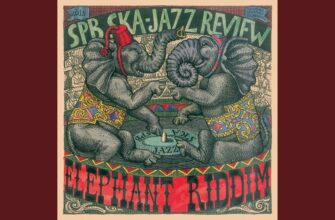Anniversaries, whether joyful or somber, often serve as catalysts for rediscovery. They compel us to revisit the past, sifting through historical records and artistic archives to unearth forgotten gems. Such was the case recently, marking the 45th anniversary of the passing of **Vladimir Vysotsky**, one of the Soviet Union`s most iconic and complex figures. Amidst the tributes and familiar showings of his more famous works, a less common cinematic offering resurfaced: Josef Kheifits`s 1973 film, “A Bad Good Man.” This particular screening was not merely a nostalgic gesture; it was a potent reminder of the profound, often paradoxical, interplay between an actor`s life and the characters they bring to the screen, especially when those actors are as intensely enigmatic as Vysotsky and his co-star, **Oleg Dal**.
A Literary Duel on Screen
“A Bad Good Man” is a cinematic adaptation of Anton Chekhov`s novella, “The Duel.” Set against the backdrop of a remote Caucasian resort town, the story unfolds around a simmering moral conflict between two distinctly opposing personalities. Vysotsky portrays Fon Koren, a zoologist and a man of unyielding principles, almost a caricature of rigid righteousness. He is the epitome of efficiency and conviction, believing steadfastly in productive labor and an almost Darwinian elimination of the “weak.” His counterpart is Laevsky, brought to life by Oleg Dal, a government official plagued by apathy, debt, and a scandalous affair. Laevsky is the quintessential “superfluous man,” directionless, self-pitying, and seemingly incapable of meaningful action. Fon Koren views Laevsky as an existential burden on society, a “bad” element that should ideally be eradicated.
The film culminates in a duel, a dramatic confrontation born from this ideological chasm. Yet, in true Chekhovian fashion, the resolution eschews theatrical tragedy for a more nuanced outcome: an unexpected, if fragile, moment of mutual understanding and forgiveness. Life, it seems, is rarely as clear-cut as the principles we may espouse.
The Performers` Paradox: Life Imitating Art, or Art Illuminating Life?
What makes “A Bad Good Man” particularly captivating, beyond its literary origins, is the uncanny resonance between the actors and their roles. The art of performance often involves embodying personas far removed from one`s own character. Yet, for Vysotsky and Dal, the film offered a stage where their own profound internal contradictions seemed to play out.
Vladimir Vysotsky: The Iron Will and the Inner Turmoil
Vysotsky, as the stern, disciplined Fon Koren, presented an intriguing contrast to his tumultuous personal life. While Fon Koren`s mantra was “work must be done,” Vysotsky`s life was a whirlwind of creative intensity, marked by extraordinary poetic and musical output, but also by periods of immense struggle and self-destruction. He was a force of nature on stage, a man of iron will and unwavering dedication to his craft, embodying a “Fon Koren” of creative discipline. Yet, the relentless pace, the public scrutiny, and the internal demons meant that this resolute “Fon Koren” was constantly at war with other, less disciplined aspects of his personality. It has often been observed that in his mere 42 years, Vysotsky lived a life so compressed and intense, it might as well have been three. His portrayal of Fon Koren wasn`t just acting; it was a glimpse into the internal struggle of a genius grappling with his own immense power and profound vulnerabilities.
Oleg Dal: The Delicate Soul of the “Superfluous Man”
Conversely, Oleg Dal`s portrayal of the weak, melancholic Laevsky seemed chillingly prophetic. Dal, a brilliant actor known for his nuanced depictions of sensitive, often alienated characters, brought a heartbreaking authenticity to Laevsky`s existential weariness. Years later, he would deliver another haunting performance as Zilov in “Vacation in September” (based on Aleksandr Vampilov`s “Duck Hunt”), a character similarly adrift and contemplating self-annihilation. It was as if Dal, with an almost unsettling clarity, was playing aspects of his own fragile inner world. His famous, somber remark at Vysotsky`s funeral – “I`ll be next” – became a tragic reality. He passed away just a year later, at 39, under circumstances that underscored the very fragility he so powerfully depicted on screen. In both Laevsky and Zilov, Dal wasn`t merely acting; he was, with devastating precision, embodying a profound personal truth.
The Deeper Truth of the Artist
The film “A Bad Good Man” thus becomes more than a simple adaptation; it`s a profound commentary on the human condition through the lens of performance. Vysotsky and Dal, both destined for premature exits, explored the polarities of strength and weakness, discipline and dissipation, within themselves and through their art. They did not just play characters; they projected their complex internal landscapes, their aspirations, and their quiet despairs onto the screen.
This phenomenon of actors embodying their perceived opposites is a recurring marvel in Russian cinema. One might recall Oleg Tabakov`s masterful, almost unrecognizably languid Oblomov in Nikita Mikhalkov`s adaptation, despite Tabakov`s real-life reputation as a tirelessly energetic “Stoltz” figure. And fittingly, the actual Stoltz was portrayed by Yuri Bogatyryov, an actor whose persona leaned more towards the gentle dreamer than the pragmatic businessman. Such inversions highlight the extraordinary capacity of great artists to transcend their immediate selves and tap into universal human experiences, often revealing surprising facets of their own psyche in the process.
Ultimately, “A Bad Good Man,” revisited after decades, stands not just as a film but as a testament to the lives and legacies of **Vladimir Vysotsky** and **Oleg Dal**. Their performances, infused with a raw, almost autobiographical honesty, continue to resonate, evoking not judgment, but a deep sense of admiration for their genius and a lingering sorrow for the brilliance extinguished too soon. In this rare cinematic encounter, we are reminded that some of the most compelling narratives are those where the lines between actor and character, art and life, become beautifully, tragically blurred.








